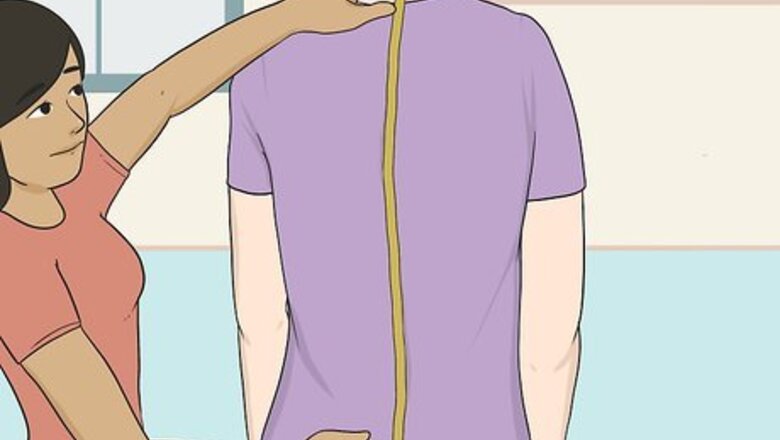
views
Where should a backpack sit on your back?
Your backpack needs to be high on your back. Believe or not, keeping your backpack low against your back isn't the way to go, as this contributes to poor posture (e.g, neck and upper back strain). Instead, make sure that your backpack is aligned and flush with the upper portion of your back. Keep the size of your backpack in mind, too! A good-fitting backpack should never be larger than your back itself.
How to Try on a Backpack

Have a friend measure your torso with a flexible cloth tape measure. Measure from your iliac crest (the very top of your hip bone) to your C7 vertebrae (the vertebrae at the base of your neck). This will give you your torso length to use to determine your pack size.Tip: It’s only necessary to measure when you are going to fit a pack for hiking or traveling. It’s not necessary if you are choosing something like a school backpack. Find your C7 vertebrae by standing up straight and bending your head forward and down at the neck. The neck vertebrae that sticks out the farthest is your C7 vertebrae. The iliac crest is the top of the pelvic bone that sticks out at the side of your torso. Feel where the pelvic bone sticks out at the frontside of your stomach with your fingers, then follow it back by running your fingertips along it to find the top of it )just below your ribcage). Place your hands on your hips, between your thumb and forefinger, to mark the line of the iliac crest for the helper. They can then place the measuring tape in the center of your back between your 2 thumbs to line it up with your iliac crest.

Choose a size of backpack based on your torso length. Look for an extra-small pack if your torso length is up to about 15.5 in (39 cm) or a small pack if your torso length is between 16–17.5 in (41–44 cm). Find a medium pack if your torso length is between 18–19.5 in (46–50 cm) or a large pack if it is more than 20 in (51 cm). These sizes are approximate and can vary from company to company, so make sure to check sizing charts for each brand of pack you want to try on. Many packs are adjustable and can fit a range of torso lengths, so there is no substitute for trying on packs and adjusting all their straps to check the fit.
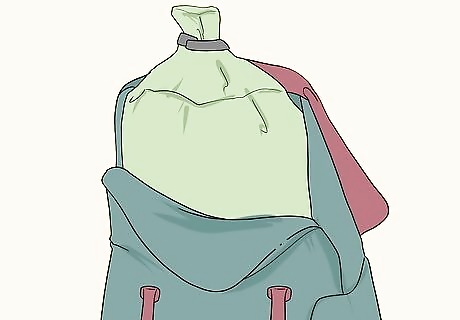
Load about 20 lb (9.1 kg) of weight into the pack. Most outdoor stores have sandbags that will allow you to test packs out with weight in the. Pack some gear (similar to what you would carry on the trail) into the pack if there are no sandbags available. It’s important to load some weight into the pack before trying it on to simulate what it will feel like under a full load.
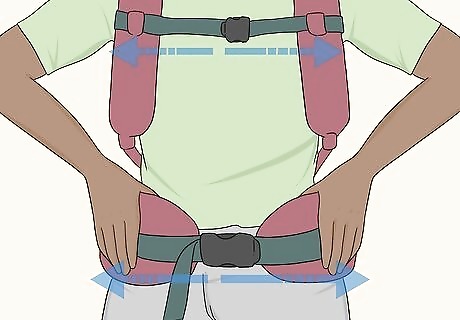
Loosen all of the belts and straps on the backpack before putting it on. Loosen everything including the shoulder straps, hip belt, load lifters, and sternum strap. This will allow you to adjust them all in the proper order to fit the pack. The hip belt is the belt at the bottom of the back that wraps around your hips and buckles in the middle. The shoulder strap tighteners are the straps that hang from the bottom of the shoulder straps. The load lifters are the short straps at the top of the shoulder straps. The sternum strap is the strap that goes across your chest.
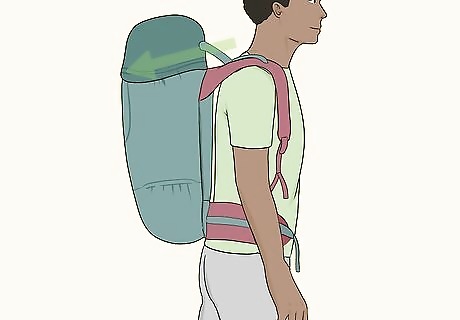
Put the backpack on your back loosely. Carefully hoist the pack up and put your arms through the shoulder straps so the pack is sitting loosely on your back. Don’t tighten anything yet. To properly and safely hoist a loaded pack, start by grabbing the loop at the top of the pack with one hand while it is resting on the ground. Slightly bend your knees, then slide the pack up your thigh and let it rest. Put the opposite arm through the shoulder strap and swing the pack around to your back while leaning forward slightly. Slide your remaining arm through the last shoulder strap.
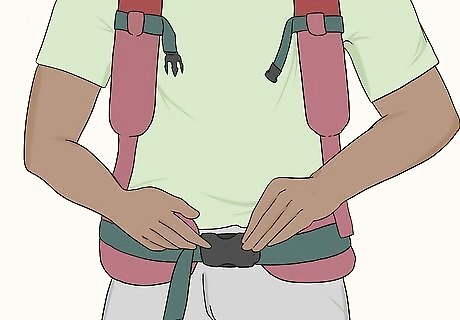
Fasten and tighten the hip belt to check if it supports the weight of the pack. Clip the buckle of the hip belt to fasten it around your waist. Tug the straps on each side at the same time until the hip belt is tight, but not pinching you. If the pack fits correctly, the middle of the hip belt will rest directly on top of your iliac crest. The padding will cover your hip bones and start to wrap around towards your stomach, but not wrap around the front of your stomach. You want to feel like the weight of the pack is resting completely on your hips with the hip belt tightened and the shoulder straps still loose. When you are hiking with a fitted backpack, 80% of the weight will be on your hips, and the other 20% on your shoulders.
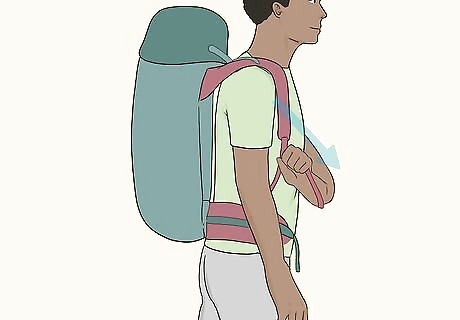
Tighten the shoulder straps until they hug your shoulders and upper back. Pull the ends of the straps away from your body and down towards your hips. Tug the shoulder straps until they are snug, but not so they are pinching your armpits. If the pack fits right, the straps will hug your shoulders from back to front with no spaces between the straps and your shoulders. You will still feel most of the weight of the pack on your hips. If you can’t get the shoulder straps to be snug and comfortable, or if there are any gaps between the straps and your shoulders, then the torso is likely too long for you and you need to try another size. If the torso length is adjustable, take the pack off again and shorten the length.
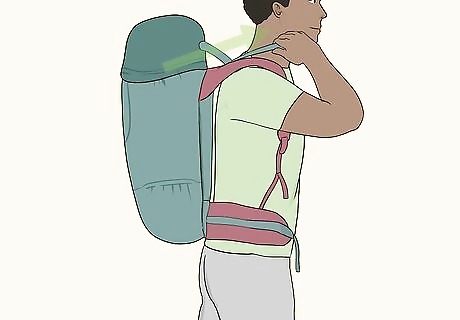
Tighten the load lifters to even the back panel of the pack out with your back. Pull down on the tabs of the straps to tighten them until the straps make about a 45-degree angle down from the back panel of the backpack. Tighten them enough to bring the upper part of the pack closer to your back, but not so tight that the shoulder straps start digging into you. It’s ok if the angle of the straps is between a 30- to 60-degree angle. You are just aiming for a snug fit, without causing any pinching or creating spaces between the shoulder straps and your shoulders. If you feel like the pack is pulling you backwards, then tighten the load lifters a bit. If the back of your head is hitting the top of the pack, then loosen them a bit. Not all packs have load lifters. High-volume packs usually come with them, but small lightweight packs often don’t because there is no need for them.
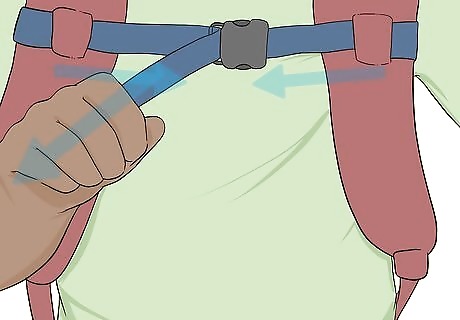
Fasten the sternum strap to bring the shoulder straps slightly closer. Clip the buckle on the chest strap and tighten the strap just enough to bring the shoulder straps closer without constricting your chest. Loosen it if the outside edges of your shoulder straps start to lift off your chest. The sternum strap should rest across your chest about 1 in (2.5 cm) below your collarbone. You don’t want to feel it across your neck and you don’t want it to constrict your breathing in any way. Many sternum straps can be adjusted up and down on the shoulder straps to find the ideal position. The sternum strap’s main purpose is to secure your shoulder straps in place. Make sure that fastening and tightening it keeps them from slipping without changing the fit of the backpack.
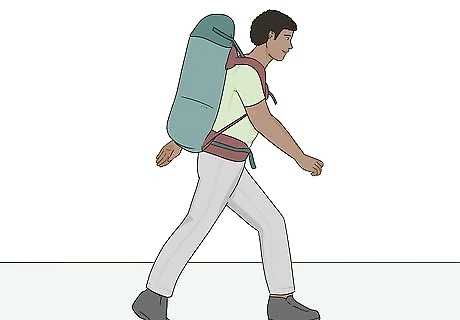
Walk around in the store to see how the pack feels while moving. Lean slightly forward as you walk, just as if you were on the trail. Try this with several different packs to find the one that feels most comfortable for you.Tip: When you are hiking for extended periods of time with a heavy pack, you can take turns loosening and tightening the hip belt and shoulder straps to shift the weight around and give different parts of your body a rest. Retail outdoors stores sometimes have small fake “trails” so you can try walking with the pack up and down inclines and over simulated rough terrain. Many pack makers and retailers offer generous return and exchange policies, so you can try a pack out for a while and take it back if you decide it doesn’t work for you in practice.
Best Backpack Shopping Practices
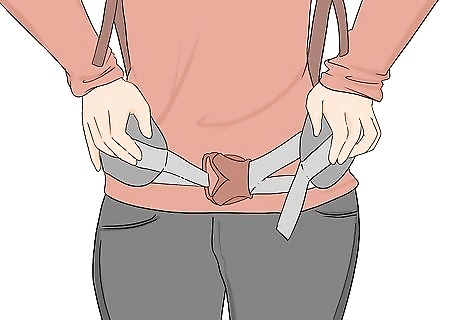
Choose a pack with a hip belt that rests perfectly on your iliac crest. The hip belt of a well-fitting pack will be centered on top of your iliac crest. It won’t be any higher or lower. If the hip belt slides below your iliac crest while you are trying on the pack, then it is too big. If it rests on your lower back, then it is too small.

Choose a backpack with snug-fitting, comfortable shoulder straps. Make sure the straps don’t rub against your neck. Check that there is no space between the straps and your shoulders when they are adjusted to fit.Tip: Some brands offer women’s packs that have a narrower shoulder harness built for people with more slender frames. If regular packs feel like the harness is too wide, then both men and women can try a women’s backpack to see if it is more comfortable. If the shoulder straps rub against your neck when the pack is adjusted to fit, then the harness of the shoulder straps is probably too narrow for you. If the straps don’t hug your shoulders, then it might be too wide.

Pick a backpack with a comfortable chest strap that secures the shoulder straps. Check that the chest strap doesn’t rub against your neck or constrict your breathing when it is adjusted. Make sure that you can tighten the strap enough to hold the shoulder straps in place on your shoulders without making them dig in or restricting your arm movement. If tightening the strap doesn’t hold the shoulder straps against your shoulders, then you might need a pack with a narrower harness. If tightening it to hold the shoulder straps in place causes discomfort, such as pinching, then try a pack with a different chest strap or wider harness.
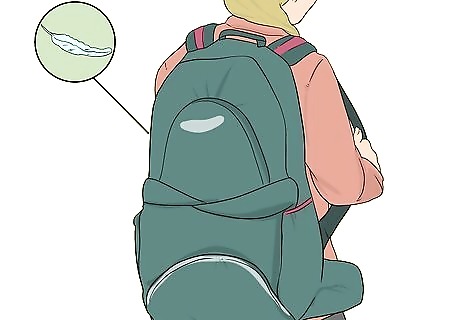
Select the lightest pack that fits you and has the features you need. Remember that you will be carrying anywhere from 30–50 lb (14–23 kg) in your pack when it is fully loaded. Every bit of weight you can cut down on by choosing a lighter pack counts for comfort on the trail or the road. Choose a backpack that has only the features you need and will use. For example, some backpacks come with lots of extra straps and add-ons for carrying extra gear. These can be useful, but they also add weight. If you don’t need all the extra features on a pack, then choose another one that fits you but is lighter.










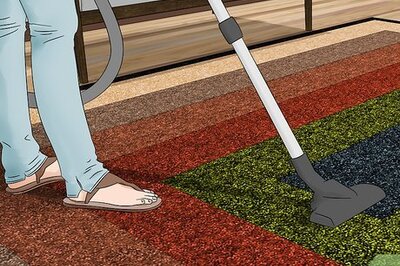
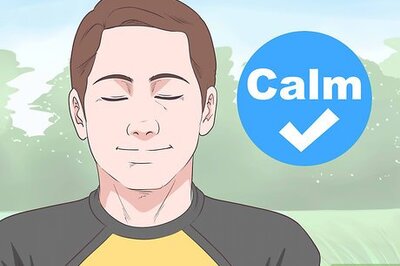







Comments
0 comment